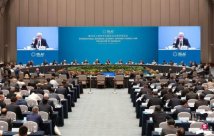What is a special refinancing bond?
Local government bonds are divided into new bonds and re -financing bonds.In a document of the Ministry of Finance in 2018, the funds raised by the re -financing bonds are used to repay the principal of local government bonds, that is, "borrow new and old" bonds.
During the pilot process of the establishment of a county -based bond at the end of 2020, the use of re -financing bonds was expanded to "repay government stock debt".This type of re -financing bonds is also known as "special recycling bonds", which is mainly used to resolve hidden debt.
In the pilot of non -implicit debt opened in October 2021, Guangdong, Beijing and Shanghai also issued a total of 504.2 billion yuan (RMB, the same below, the same, S $ 94.2 billion).The hidden debt is clear.
What is hidden debt?
hidden debt refers to the debt that the local government directly or promises to borrow with fiscal funds and provides guarantee in illegal laws in addition to the legal government debt limit.For example, financial debt of local government financing platforms such as urban investment companies and accounts arrears of enterprises.This type of debt is not reflected in the official financial statements and is also called "urban investment debt".
How to solve hidden debt by issuing special reinforcement bonds?
Through the issuance of special recycling bonds, the debt burden transferred from the local government's financing platform to the provincial government, reducing the risk of debt defaults of local governments.By issuing bonds to transform high interest and opaque debt into low interest, regulatory transparent debt, also reduces financing costs and give local governments more debt repayment time.
How many hidden debt does local government have?
Data from the Ministry of Finance of China show that as of the end of April this year, the non -repayment debt on the book of local governments across the country was 3.707 trillion yuan, which was lower than the 4.2.17 trillion yuan approved by the National People's Congress.However, the official did not disclose the scale of hidden debt.
The International Monetary Fund Organization calculated that in February this year, as of the end of 2022, the total hidden debt of the local government financing platform was 66 trillion yuan, which was much higher than 40 trillion yuan in 2019.Goldman Sachs Group estimates that, including hidden debt, the total debt of Chinese government government debt is as high as 94 trillion yuan.
Why did local debt pressure have increased sharply in recent years?
Large -scale infrastructure construction is one of the important engines that drive local economic development over the years.However, the infrastructure itself is not profitable, and it is easy to encounter financing bottlenecks as investment projects.However, the land in Chinese cities is owned by the government and can create revenue through selling land.Therefore, local governments have formed a development model of borrowing investment through platforms such as urban investment companies, and then using land revenue to repay debts.
The three -year crown disease epidemic has increased the cost -related expenses of local epidemic prevention, and the slowdown in economic growth has led to a decrease in fiscal revenue such as taxation.What's even more severe, many leading real estate companies have been in a crisis of liquidity in the past two years, and the property market has continued to weaken the land transfer income significantly.There are more and more expenditures, but less and less income, which leads to high debts in many local governments and fall into financial difficulties.



